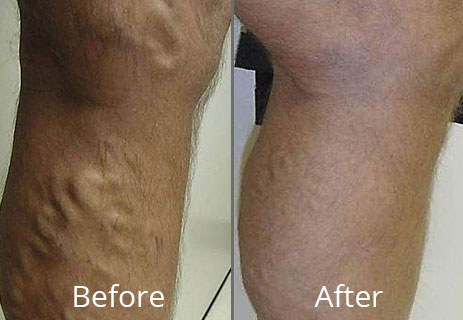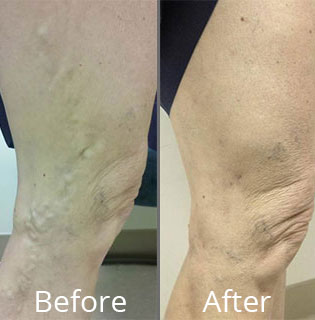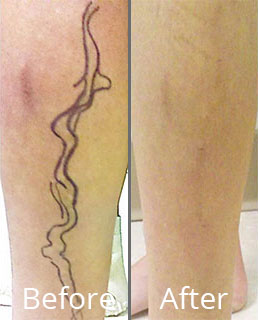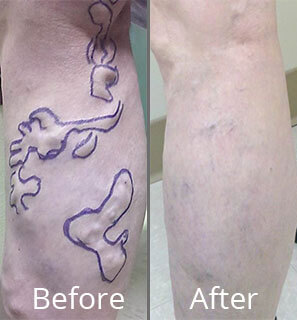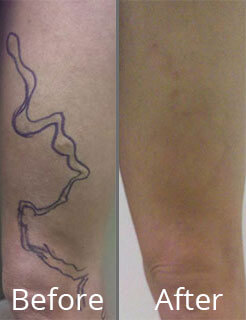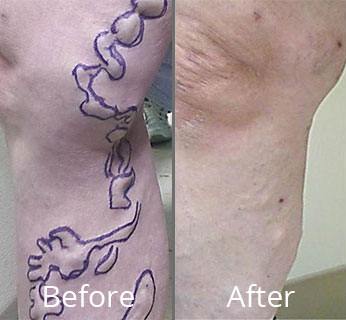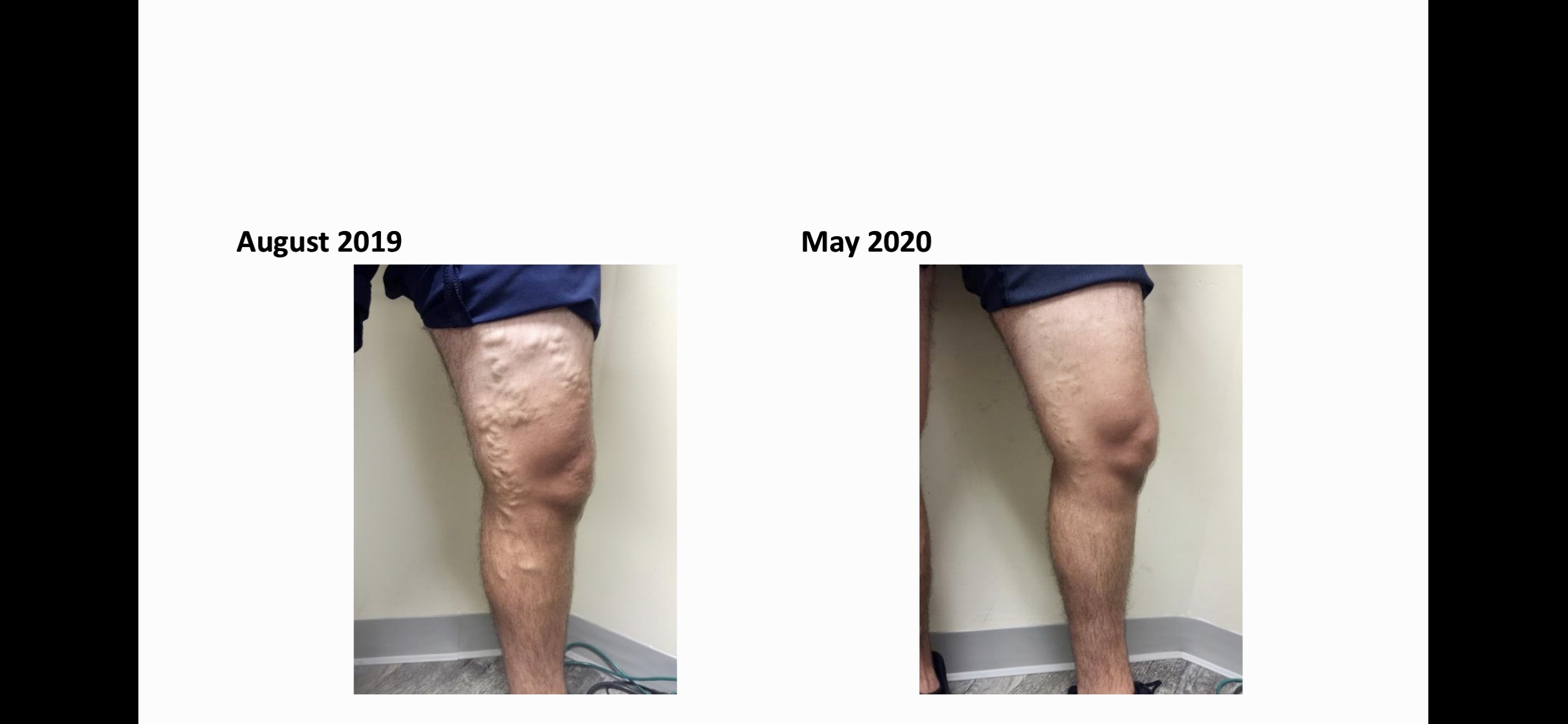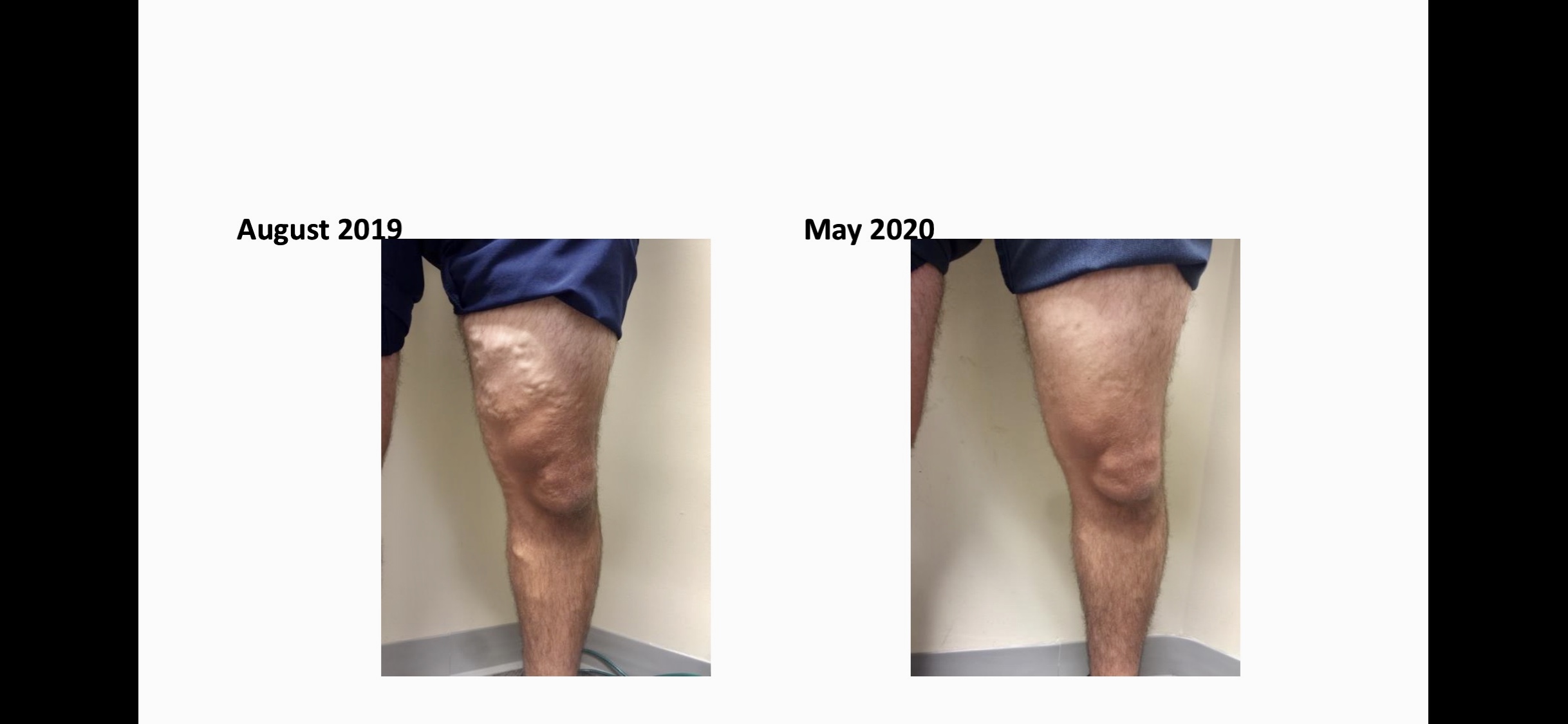About Varicose Vein Treatments for Bulging Leg Veins
Varicose veins are typically found in the superficial venous system and often involve the main trunk veins – the great and small saphenous veins – as well as tributaries.
Varicose veins are superficial veins that have expanded in response to increased pressure caused by incompetent or absent valves. Progressive vein dilation eventually prevents the valve cusps from closing properly resulting in reflux.
Alternatively, a lack of competent valves can also cause dilation of the vein. As one valve fails, increasing pressure is exerted on each more distal valve until it, too, becomes incompetent. Diameters of varicose veins can range from 3 mm to > 8 mm.
Learn more about:
Varicose Vein Treatment Before and After Photos in Chesapeake, VA
(Click to Enlarge)
Individual results may vary
What are varicose veins?
Varicose veins are most often swollen, gnarled veins that most frequently occur in the legs, ankles and feet. They are produced by a condition known as venous insufficiency or venous reflux, in which blood circulating through the lower limbs does not properly return to the heart but instead pools up in the distended veins.
More than 25 million Americans suffer from venous reflux disease. The symptoms can include pain and fatigue in the legs, swollen ankles and calves, burning or itching skin, skin discoloration and leg ulcers. In less severe cases, thin, discolored vessels – “spider veins” – may be the only symptom.
Gender and age are two primary risk factors in the development of venous reflux. An estimated 72% of American women and 42% of men will experience varicose veins symptoms by the time they reach their sixties. Women who have been pregnant more than once and people who are obese, have a family history of varicose veins or spend a great deal of time standing have an elevated risk for the condition, but it can occur in almost anyone at almost any age. Varicose veins never go away without treatment and frequently progress and worsen over time.
Severe varicose veins can have a significant impact on the lives of people who work on their feet – nurses, teachers, flight attendants etc. Research has shown that more than two million workdays are lost each year in the United States, and annual expenditures for varicose vein treatment totals $1.4 billion.
Dr. Challa rigorously reviews all medical protocols at Chesapeake Vein Center and MedSpa prior to application. An advantage of having a surgeon such as Dr. Challa actively practicing at the same site is the higher standard that medical offices typically adhere to. You can be assured that these practices are safe, effective and tested.
Yes! Dr. Challa actively sees and treats patients at Chesapeake Vein Center and MedSpa. This means that our office adheres to a higher standard of care, equal to that of medical offices. Other medical spas are often ‘overseen’ by a medical director, or may be simply ‘associated’ with a medical director; neither of these situations carries any guarantee that the medical director even practices out of that location.
